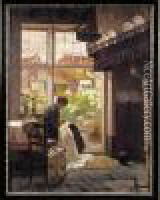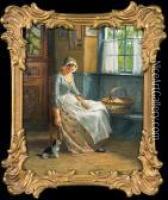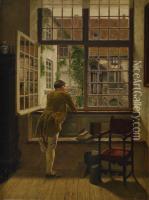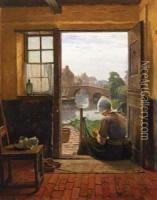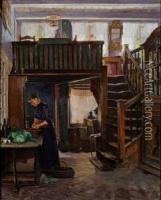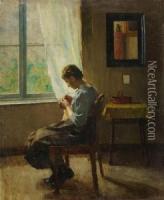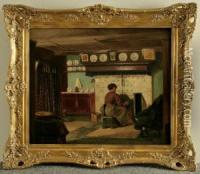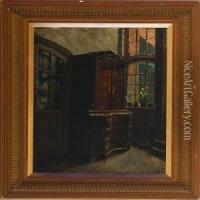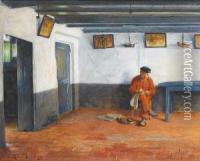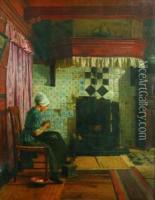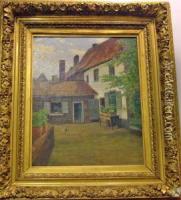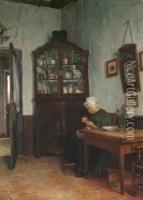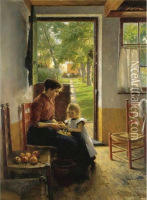Henrik Nordenberg Paintings
Henrik Nordenberg was a Swedish painter, born on November 19, 1857, in Norrköping, Sweden. He is best known for his genre paintings and his works that often depicted everyday life in Sweden, as well as historical scenes. Nordenberg was part of a group of Swedish artists who lived and worked in Düsseldorf, Germany, which was a major art center in the 19th century.
Nordenberg studied at the Royal Swedish Academy of Arts in Stockholm before moving to Düsseldorf in 1877. There, he joined the so-called 'Düsseldorf school of painting,' where he was influenced by the works of other genre painters, developing a style characterized by fine detail, a warm palette, and a focus on lighting effects.
Through his paintings, Nordenberg often sought to capture the spirit and customs of the Swedish people, reflecting a romanticized view of rural life. His subjects typically included scenes of domestic life, rural landscapes, and historical narratives, which were popular among art patrons during that period. Some of his most well-known works feature children and peasants, showcasing his ability to portray the innocence of childhood and the simple, hardworking life of the Swedish countryside.
Nordenberg's historical paintings were inspired by significant events in Swedish history, and he was particularly adept at capturing the emotions and drama of these moments. He received numerous accolades for his work, which was exhibited widely, including at the Paris Salon, where he received an honorable mention in 1889.
Despite his lengthy residence in Germany, Nordenberg remained deeply connected to his Swedish roots, and his art continued to reflect the culture and traditions of his homeland. His work contributed to the national romantic movement in Sweden, which emphasized the importance of national identity and the beauty of the Swedish landscape and its people.
Henrik Nordenberg passed away on June 28, 1928, in Düsseldorf. His legacy lives on through his paintings, which are held in the collections of several museums in Sweden and abroad. They continue to be appreciated for their technical skill and their evocative representation of 19th-century Swedish life.
